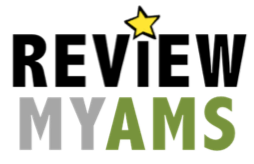
By Megan Lopez, Senior Marketing Manager, Personify
Earlier this month I wrote about how to master the art of identifying your organization’s wish list of requirements for selecting a new association management system (AMS) or constituent management and engagement system (CME. However, it is only one of many critical steps in the sometimes-daunting buying process.
Not to be confined by the character limit of a mere blog post, we recently hosted a webinar with Teri Carden, founder of ReviewMyAMS, to walk through the entire buying journey: from the moment you decide that it’s time to make a change in your technology stack all the way up to your final selection.
A Path to Success
While this path won’t look the same for everyone, it covers the key milestones for most AMS/ CME buying journeys.

- You decide that, for whatever reason, it is time to make a change. It’s important to understand the catalyst for this realization. Have you outgrown your current solution? Is it no longer meeting the needs of your constituents? Is managing the software taking up too much of your staff’s time?
- Identify the stakeholders and influencers that will be involved in the buying process and align on what the process will look like as a group. Setting expectations early will help you avoid any confusion or risk delays down the road.
- Next, you’ll need to inventory the technology you currently use. Include their cost, licensing terms, overall satisfaction level and the intended use for each. This is especially important if you want your new AMS to integrate with and/or eliminate some other technologies that are currently in use.
- Now it’s time to develop a wish list of all the things that you would like your new association management system to do.
- Research vendors that you want to request proposals from. (Check out the on-demand webinar for tips on how to research vendors!)
- After you decide on a condensed list of possible vendors, submit an RFP to each with clear requirements and submission instructions. We recommend limiting the number of vendors that you submit an RFP to five or fewer. If you include too many vendors in the RFP process, your staff may be overwhelmed by trying to review the proposals and eliminate vendors that are not a good fit for your needs or budget.
- Once you receive the RFP responses, it's time to evaluate vendors based on the criteria outlined in the RFP and your budget. We recommend that you use a scoring system to compare the vendor options.
- Select your winning solution and start planning for implementation!
I recognize that this tidy graphic and brief list of steps makes the process seem a little too easy. During our recent webinar, we also discussed some common challenges you may encounter and how to overcome them. Here are a few of the common obstacles discussed:
Common Challenges & Obstacles
Limit yourself to one demo per day. Holding too many demos can cause decision paralysis and can wear down your team. Make sure that every vendor that you’re bringing in for an in-person demo is a top contender so that you aren’t wasting your time or theirs.
Beware of scope creep. Make sure that you align with your buying team early in the process on the requirements needed for your AMS and how you are prioritizing them. If not, you may find yourself excited over a fancy, new feature that is outside of your organization’s original scope and don’t provide real value for your team and could lead to delays in the implementation process.
Look for hidden expenses. Are there expenses hiding in your budget that will affect the total cost of ownership? When comparing options from multiple vendors, make sure to account for hidden costs such as ongoing training for staff or customizations that will need to be built to ensure the system meets the needs of your organization.
Don’t Underestimate Data Hygiene. It’s crucial to remember that the effectiveness of your AMS depends on the quality of your data, and it takes work to ensure that you have clean, accurate data in your system. Invest in tools and people that can help you keep it up to date and make the most of your limited resources. You may find that you’re sending out membership letters to addresses where your members no longer live or trying to renew a membership for a deceased individual.
Frequently Asked Questions
We were thrilled to have such a great turnout and receive more questions than we had time to answer on the call. I’ve listed the questions that we received below and my recommendations.
How does this process change if we already have 2-3 vendors in mind and we’re unlikely to stray outside of those?
It doesn’t really change! You still will need to identify that wish list of requirements and submit an RFP to the vendors you’re considering. It may cut out some time for you in the search process but, again, I recommend that you do a thorough search of all the vendor options that are available before you start narrowing down your list.
What’s the difference between an RFI and an RFP?
An RFI, or request for information, is typically used early in the process when you are researching vendors but don’t necessarily know your requirements or aren’t ready for pricing. An RFI is generally less structured and more informal. If you’ve taken all the appropriate steps to identify your requirements, budget and preferred terms AND you’re serious about selecting a new AMS, you’ll be ready to receive proposals.
How many RFPs should we send out? Should we expect a response from all the vendors that we contact?
This is a great question, because sometimes younger organizations evaluating AMS software for the first time get overly excited and request proposals from 10+ vendors, but they don’t actually have the resources to evaluate that many proposals and they probably could have eliminated a few of those vendors up front with some preliminary research. It really depends on the area of the market you’re looking in, but a sweet spot is usually 5 or fewer RFPs with the hopes that at least 3 will respond with quality proposals. ALL vendors should at least respond to an RFP, even if it’s to disqualify themselves, but it doesn’t always happen that way.
Do you all AMS solutions charge extra for cloud hosting, space usage, customer service plans, etc.?
Each vendor has their own model for hosting, usage and support. Some will be at an additional cost and others will include support and unlimited usage in their licensing fees. Be sure to understand these differences up front so that you can make the best decision on the solution that meets your needs and is within your budget.
Once an implementation starts, how do you manage scope-creep and additional programming needs?
A5: Stay focused on your core system of requirements until the initial implementation is complete. If there are new features that you’re interested in but weren’t originally planning/budgeting for, put them on your wish list for later consideration.
If you were unable to join us at the webinar, you can now watch “From Start to Finish: An All-Inclusive Guide to Selecting an AMS” on-demand to navigate the complex process of selecting a new AMS and learn more about overcoming the key challenges you might face along the way.
